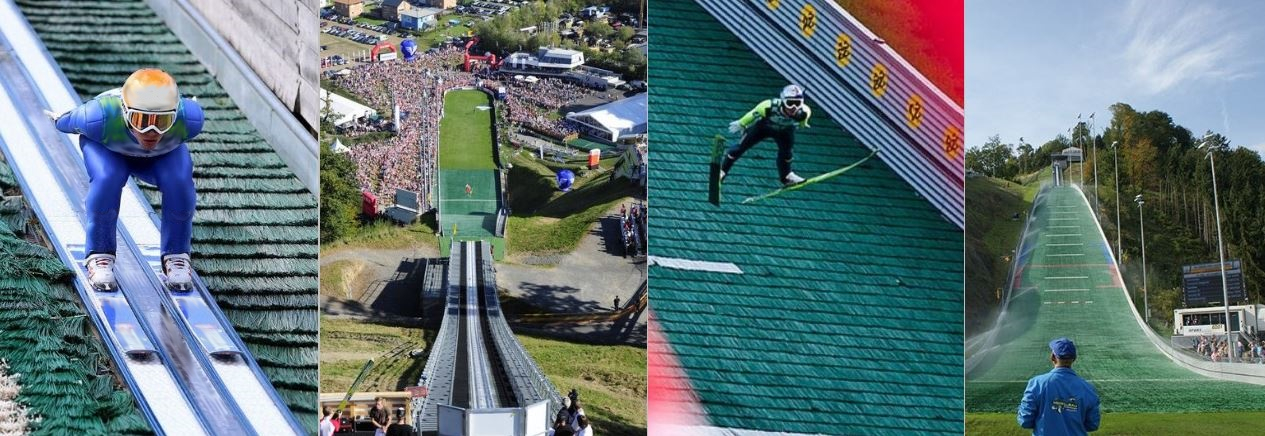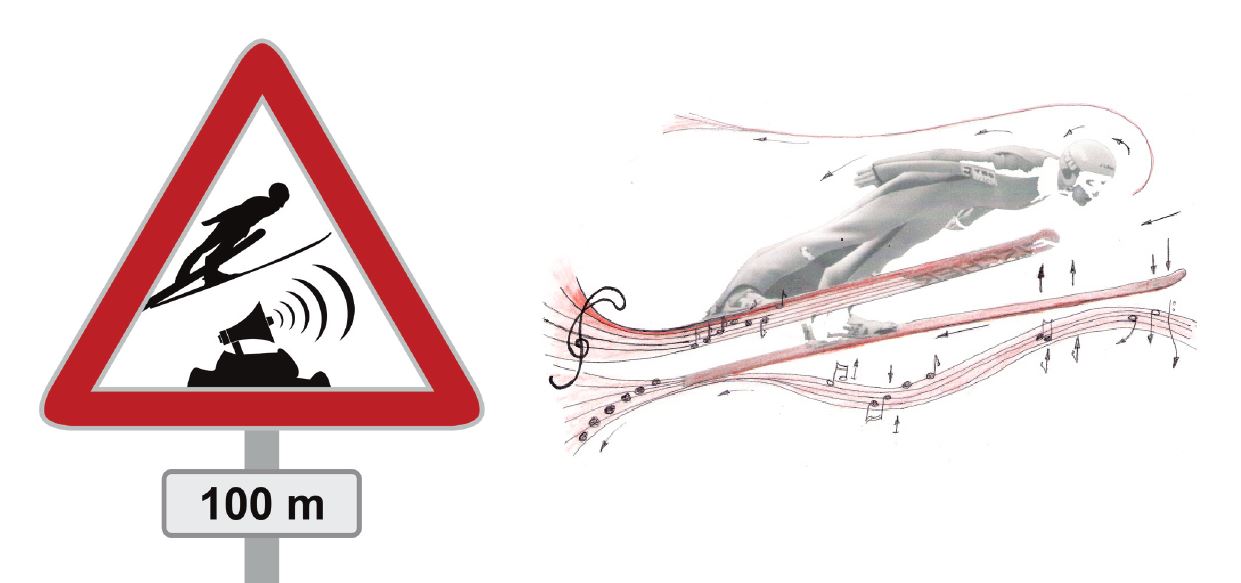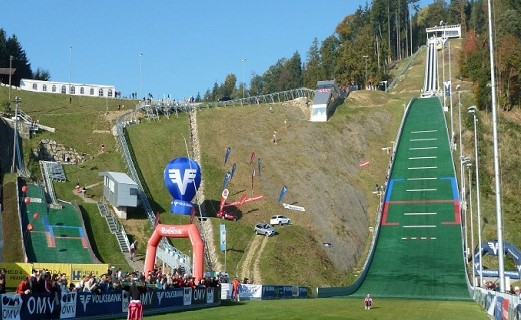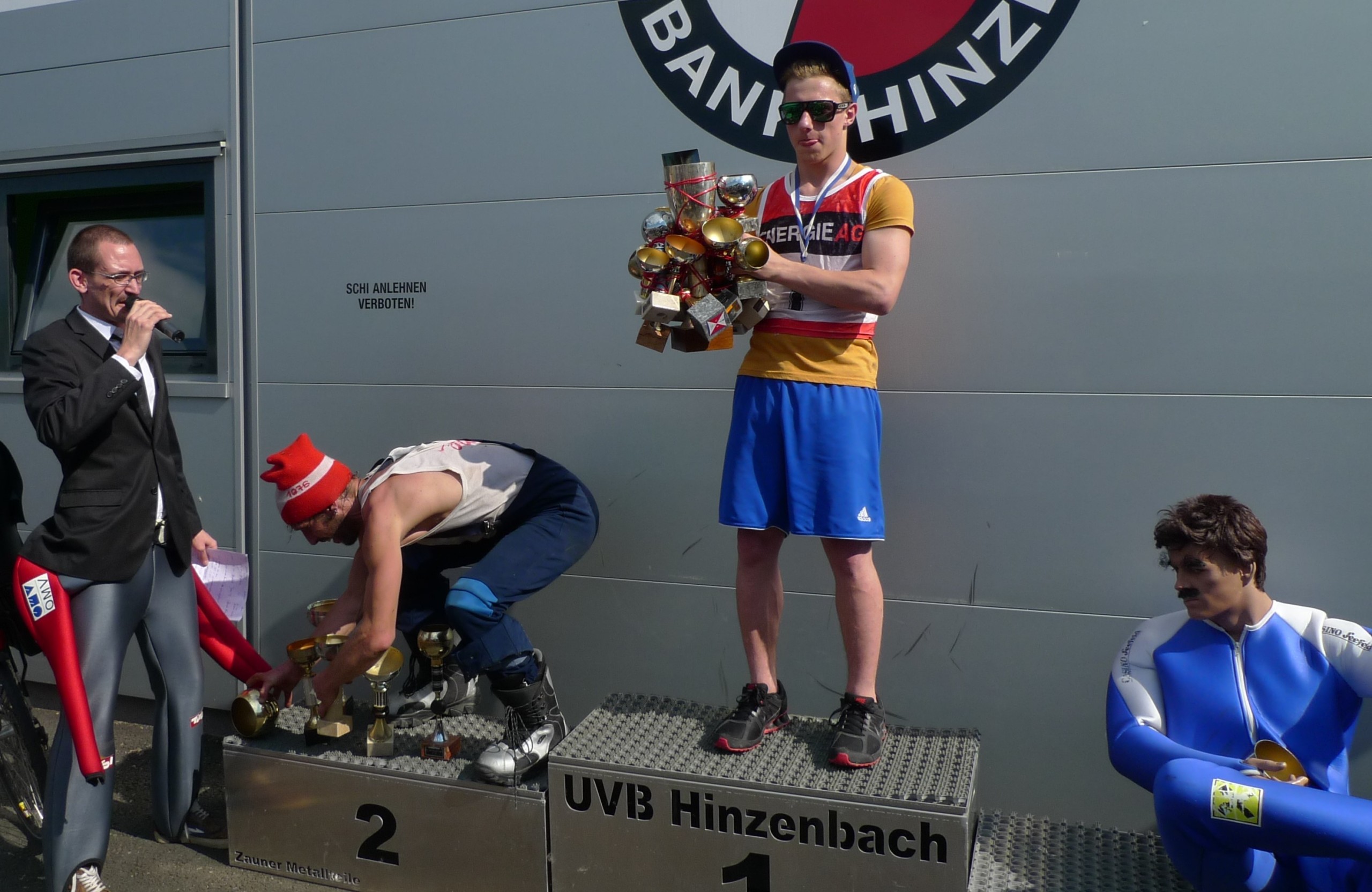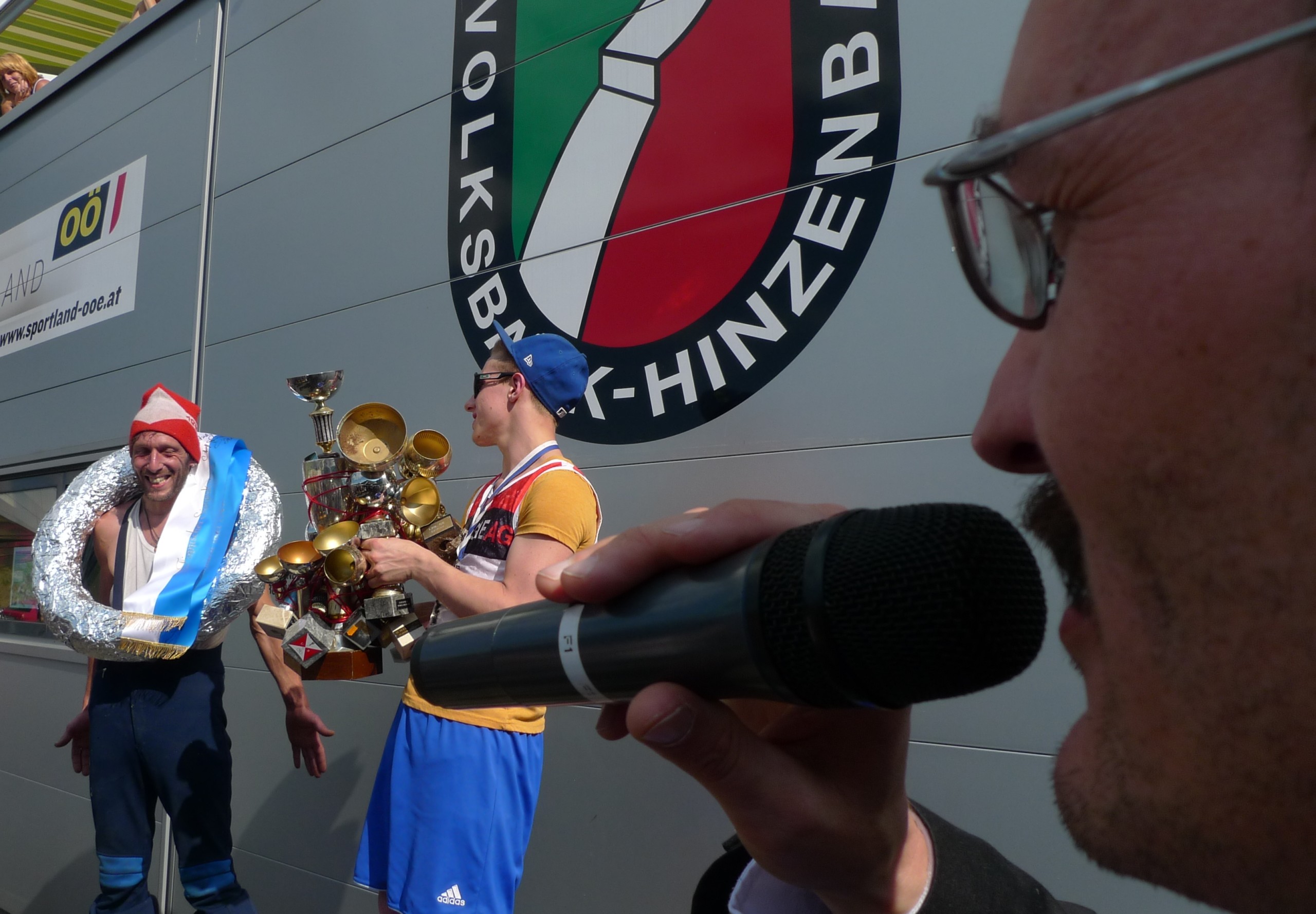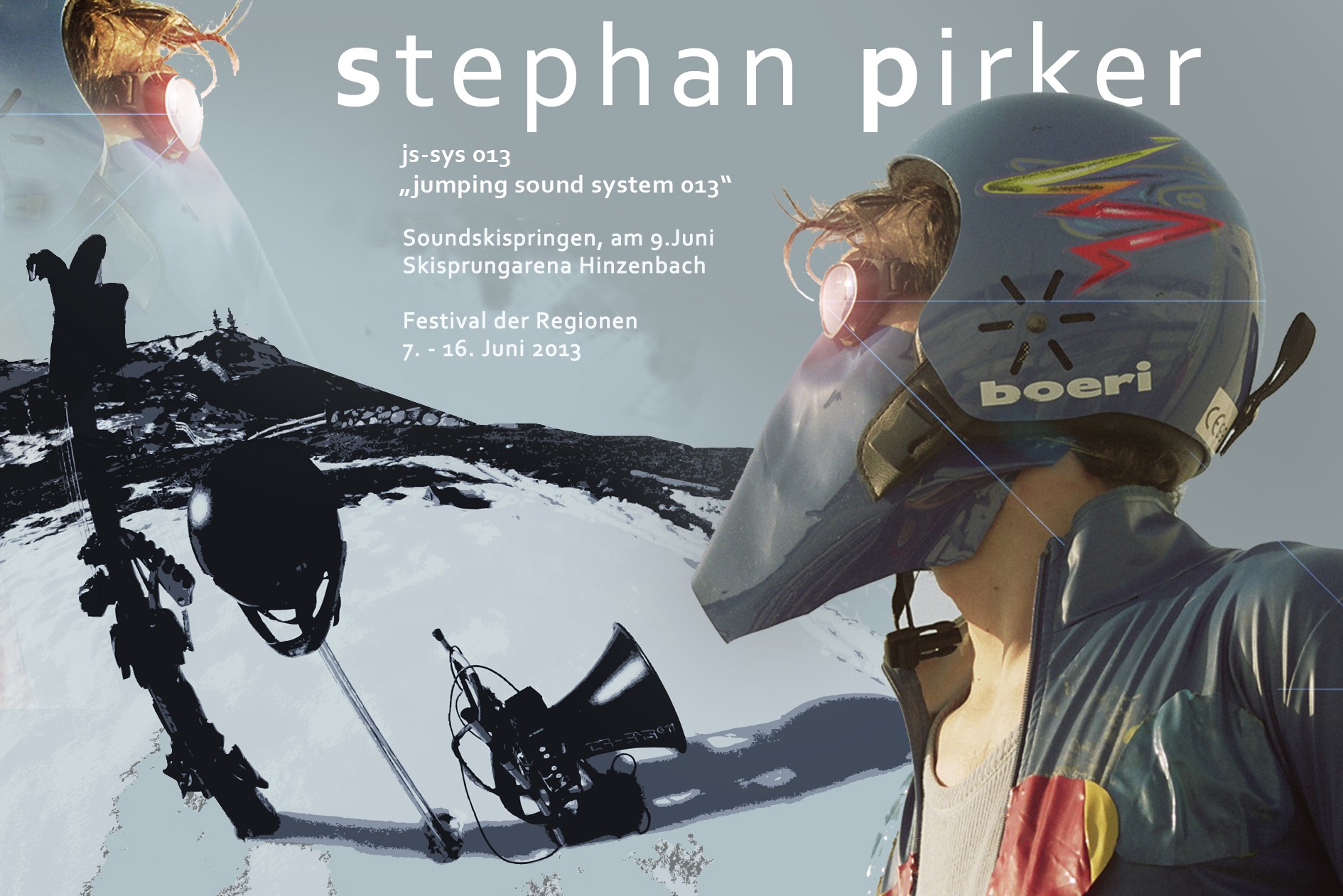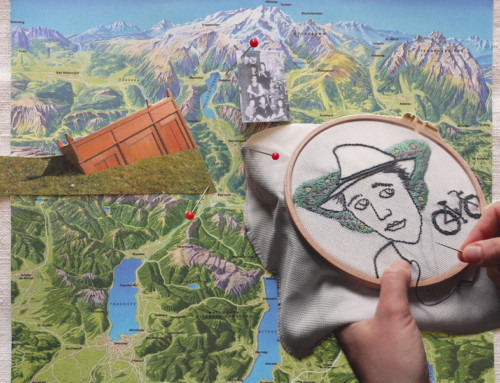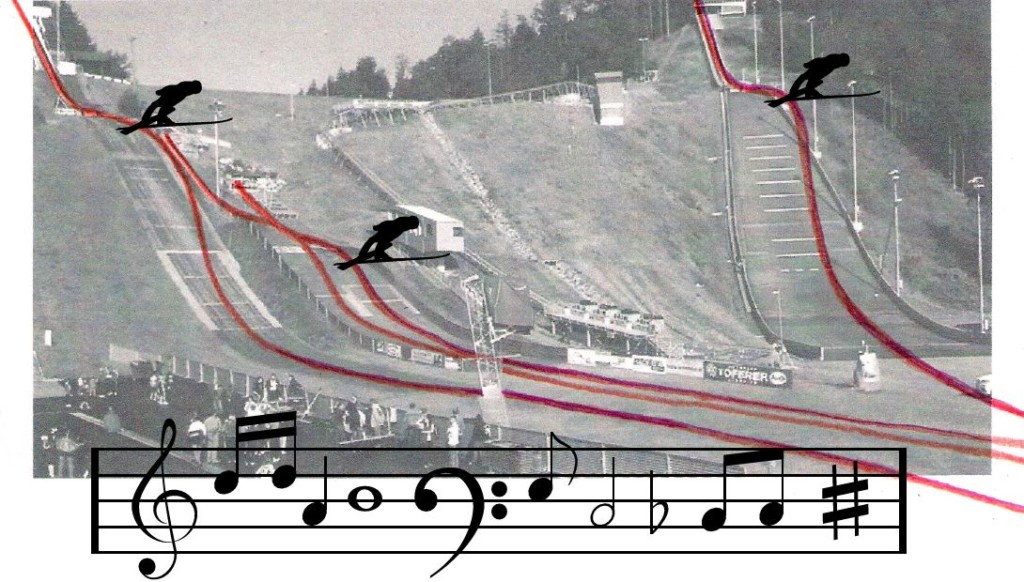
my roles: Sequence concept & direction, audience involvement, performative stadium announcer.
Overall artistic concept and technical implementation: Stephan S. Pirker
JUMPING SOUND SYSTEM
Festival of the Regions, 2013
Ski jumping facility Hinzenbach/Eferding (AUT)
The world’s first sound ski jumping system allows the architecture of the ski jumping facility and the flight quality of the ski jumper to be set to music. The skis as well as the legs of the jumper are equipped with sensors that send data to the stadium in real time via radio. These are converted into sounds there and made audible live during the jump. In this way, a new dimension of the art of ski jumping can be experienced. To determine the winner, the jumped distance is not combined with a posture score as usual, but with the sound score of the respective jump awarded by an audio jury.
Sound ski jumpers: Dustin Hopfgartner (AUT), Heikki Ylipulli (FIN), Walter Steiner (AUT), Noriaki Kasai (JAP) and Andi Felder (AUT)
The local hero from Eferding, Dustin Hopfgartner, was superior with his contemporary style to the more traditional sound of the ski jumping legends, and was thus able to win the competition.
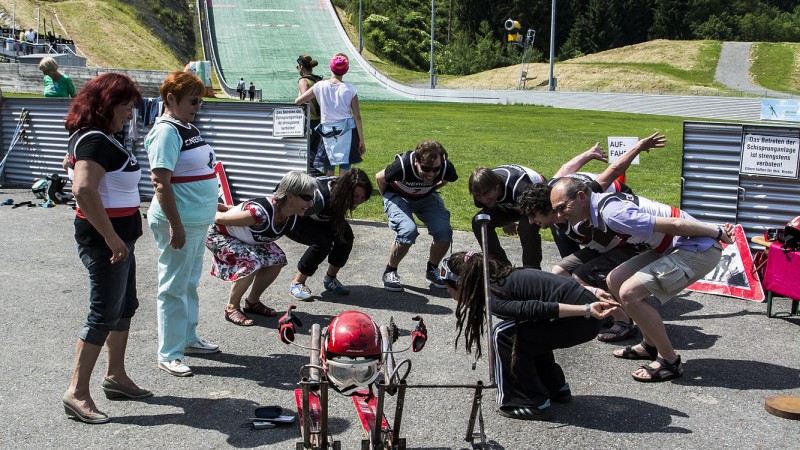
INVOLVEMENT OF THE PUBLIC AS STATISTS OF THE SKISPRUNG ENSEMBLY
Concept and organization: Mario Sinnhofer & Günter Hanninger
The first 50 visitors were given race numbers at the entrance and divided into small training groups. These involuntary jump aspirants were instructed in the art of ski jumping during the entire event at several stations supervised by “trainers” (e.g. warm-up in the finish area, joint ascent with the actual jumper in the funicular, jump training at the jump tower above the inrun, etc.). Some of these visitors briefly had the impression that they were actually expected to jump over the 90m ski jump. Since groups of people with start numbers were constantly moving across the entire area in an athletic manner, the remaining visitors (without start numbers) had the impression that many people were seriously planning to attempt a sound jump.
Audience trainers: Cimi Czimek-Vettori, Andrea Reisinger, Sun Li Lian Obwegeser, Christina Hartl-Prager, Verena*Henetmayr
CONTRIBUTORS / JUMPING SOUND SYSTEM 2013:
Sound jumper: Dustin Hopfgartner (AUT) – as himself, as well as in 4 alternating roles of ski jumping legends Walter Steiner (AUT), Heikki Ylipulli (FIN), Noriaki Kasai (JAP) and Andi Felder (AUT)
Trainer: Bernhard Zauner
EJ’s (effect jockeys) & sound engineering: Michael Schweiger & Christoph Fügenschuh
Audio jury: Stephan Pirker, Fabian Joost, Daniel Jarosch, Christoph Fügenschuh
Long distance judge: Wolfgang Roithner
Jumping Warden: Franz Starzer
Performative stadium announcers: Mario Sinnhofer (alias Dr. Peter Nidetzky) & Günter Hanninger (alias Captain Hanno in Finnish)
Camera: Falko Purner, Daniel Jarosch, Martin Music
AND FOR ALL THOSE WHO ARE INTERESTED IN MORE DETAIL…
… here the details for the technical implementation
Sound ski: The jump skis are equipped with several glued sensors that react differently. A 3D Gforce sensor with a load capacity of up to 5-G is mounted behind the shovel at the tip of the ski, which reacts to movement in 3 axes and detects acceleration. Two flexion bending sensors (10 cm bi-metal strips) at the front and rear and end of the ski – where there is the most bending (take-off, flight, landing). A Shock Pieco Sensor (pressure sensitive) is located under the jump shoe, which reacts in the run-up track, during take-off and landing. Another shock sensor is mounted in the front area of the ski.
Ski jumper: The jumper also wears a knee stump, which has a flexion bending sensor and a 3D Gforce sensor sewn into it. This converts the difference between approach squat and flight, as well as the quality of the flight (shaking or steady) into data.
Transmitting system: Via thin cables, which run safely and aerodynamically along the surface of the skis, the electronic impulses are sent to the Ebody 2 HF radio transmitting system, a small box measuring 10 x 6 x 2 cm. This broadcast box is worn with a belt under the jumper’s suit. The pulses (low-frequency waves of 2.4 Ghz) are detected by a receiver connected to the computer in the target room and converted into different sound tracks via a midi and sound program.
(Yes. Some think the Pirker is a little crazy).
